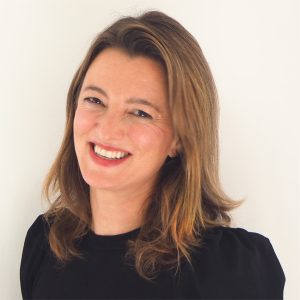Living with Sickle Cell Disorder and the consequences of AMR

My Story: David Owoeye
My name is David Owoeye, originally from Nigeria. I am a sickle cell warrior, advocate, author, and medical doctor working in Jazan (Saudi Arabia) as a General Practitioner (GP) but specialised in Infection Prevention and Control. Sickle cell disorder is an inherited chronic blood disorder that can be acquired by birth when one or two of the parents have the sickle cell gene called Hemoglobin S or C.
My AMR journey as a Sickle Cell Warrior
A notable aspect of my antimicrobial resistance (AMR) journey has been the occurrence of chronic leg ulcers. This is a common complication of Sickle Cell Disorder. Chronic leg ulcers typically develop in bony areas like the ankles and elbows where blood supply is insufficient. Over the past few years, I’ve experienced two episodes of chronic leg ulcers affecting both ankles at different times.
Currently, I am dealing with my third instance of chronic leg ulcers, which is now affecting my right ankle. I’ve been diligently addressing this issue in collaboration with my hematologist, plastic surgeon, and wound care specialist at hospitals in Jazan, Saudi Arabia.
Recently, I underwent a skin graft procedure to address the chronic leg ulcer. A test performed before my surgery detected a Multidrug-resistant (MDR) organism called Pseudomonas aeruginosa, for which I underwent a two-week course of treatment with ciprofloxacin, a second-line treatment option. Unfortunately, the skin graft was unsuccessful as the wound became infected. Tests conducted in the first week after my procedure revealed the presence of another Multidrug-resistant (MDR) organism, Pseudomonas fluorescens. This type of bacterial infection meant I was resistant to most available antibiotics except for two classes of antibiotics.
I was unfortunately required to receive yet another 10 days of intravenous antibiotics. The antibiotic I have been prescribed belongs to one of the two classes to which the cultured wound has shown sensitivity. These antibiotics are also classified under carbapenems, which are among the last resort classes of antibiotics. This classification indicates that they belong to a certain group of antibiotics typically reserved for hard-to-treat infections that do not respond to everyday antibiotics. Usually, carbapenems are administered intravenously and require a patient to be hospitalised. Intravenously means the medication is given through a drip or a tube.
I am excited to participate in a project aimed at demonstrating the feasibility of self-administering intravenous carbapenems at home, either by the patient or the patient’s family. I am the first participant in this project, which is being evaluated for potential adoption as a self-administered treatment option for patients in the Jazan region. Concurrently, I am maintaining regular dressing and cleaning of the chronic leg ulcer under the guidance of the wound care specialist, while the plastic surgeon, hematologist, and other medical teams closely monitor the progress and outcomes of the treatment.

How I use my experience to empower others
Although there are hardships living with sickle cell disorder, I can use my experience to inform people about sickle cell disorder and the reality of antimicrobial resistance (AMR).
One of the projects I use to share my patient story with others is a series of books. These books include poems aimed at explaining the complications of sickle cell disorder:

Why does AMR impact Sickle Cell Disorder Patients?
Antimicrobial resistance (AMR) is more prevalent among individuals with sickle cell disorder due to various factors. Firstly, sickle cell patients often require frequent and prolonged antibiotic treatments to manage bacterial infections, as their weakened immune system leaves them more susceptible to infections. This continuous exposure to antibiotics can promote the development of resistance in bacteria over time. Additionally, the nature of sickle cell disorder necessitates frequent hospitalisations, where patients are exposed to a diverse range of bacteria, including those that may be resistant to antibiotics.
Furthermore, chronic complications like leg ulcers can lead to persistent infections requiring extended antibiotic therapy, further increasing the risk of AMR development. Lastly, the limited availability of effective antibiotic options for treating certain bacterial infections in sickle cell patients contributes to the higher prevalence of AMR in this population.
Disclaimer: This story is shared with the permission of the individual(s) involved and is intended for educational and awareness purposes only. It does not represent medical advice and should not be used as a substitute for consultation with qualified healthcare professionals. While we encourage you to share the story in its original format, all rights are reserved by The AMR Narrative. Please do not reproduce, modify, or use any part of this story without prior written consent from The AMR Narrative. To request permission, please contact us here.

David Owoeye
David Owoeye, a sickle cell warrior, fervently shares his experiences, complications, and other challenges to support fellow individuals with sickle cell disease.
He actively participates in numerous sickle cell communities, both locally and internationally, and holds a position as one of the trustees of the Beulah Sickle Cell Foundation in Nigeria.
A skilled writer, David has been honoured with awards for his contributions while serving in editorial capacities for various organisations. Notably, he served as the 2003 best school (UITH) chapter editor-in-chief of the Nigerian Conference of Christian Medical and Dental Students (NCCMDS) nationally. The newsletter (MEDIZOE) produced under his leadership was nationally acclaimed as the best in 2003.
David obtained his MBBS and MBA from the University of Ilorin, Nigeria, in 2005 and 2010 respectively. Additionally, he holds a Master of Science (MSc) in Infection Control awarded by the University of Essex, Colchester, UK, in 2018.


